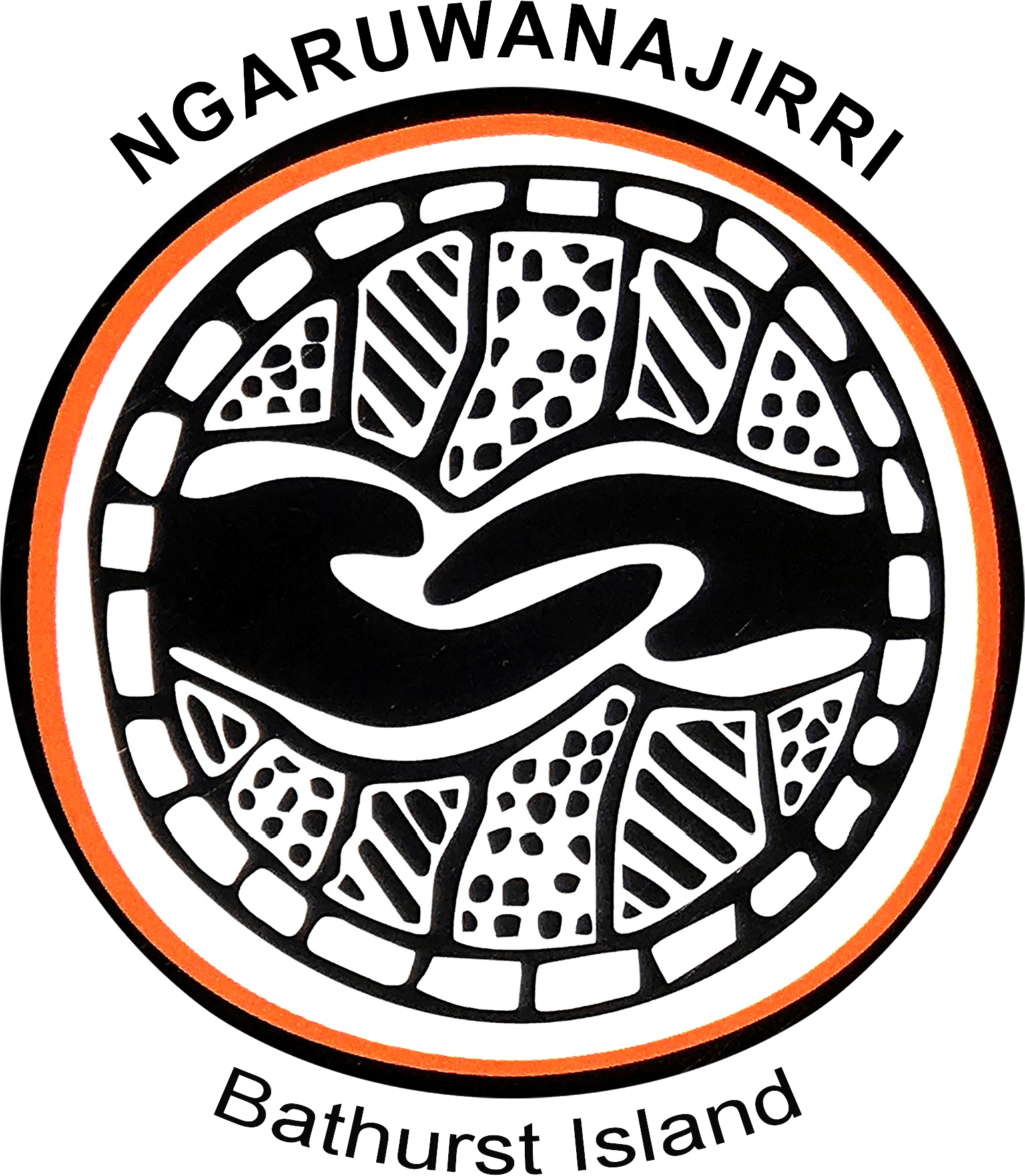Art making
Carving
Ngaruwanajirri carvers work on traditional forms and motifs that have been a part of their culture for time in memorial. These are formed with a refined use of hand tools and electric grinders. The ironwood timber used for all carvings is collected sustainably from local fallen ironwood trees. As the timber is so heavy the fallen trees are cut into segments with a chainsaw before being brought back to Ngaruwanajirri to be cut down further and turned into carvings.
-
Read more
After finishing the carvings with a fine sanding, they are painted in ochre with designs further instilling each item with the identity of the artist. Aside from Pukumani Poles and figures, Ngaruwanajirri carvers make a plethora of different birds and Tiwi busts all painted with traditional Tiwi face painting designs.
The carvers are an all-male group who together contribute a jovial atmosphere to an activity requiring both considerable physical strength and the steady hand of an experienced craftsmen.
Natural ochres
The Islands have many sources of natural clays and ochres from which Tiwi People have, over centuries, honed a palette of colours for decorating their own bodies as well as cultural items. Dry white is sometimes found in the cliffs as well as a pipeclay found in wetter environments near inland water ways streams. The bright Tiwi yellow ochre is dug as lumps from a cliff and transported to the workshop.
-
Read more
When this yellow rock is burnt it gradually changes colour going from yellow to orange until it is a deep or fiery red. Art is then made with four Tiwi traditional hues of yellow, red, white, and black (charcoal).
Although there are traditional methods for fixing ochre, so it remained on surfaces of bark and wood (orchid sap for example) most historical Pukumani Poles and portable art was not fixed and has proven difficult to preserve.
Today a modern binder is mixed into all paints to secure the ochres into the future. At Ngaruwanajirri, artists use their local ochres on canvas and on thick archival paper that hold thick ochre pigment well.
Water colours
In recent years, the artists at Ngaruwanajirri have expanded their skills by taking up new media, particularly watercolour. With gentle support from Joy Naden, several artists have joyfully embraced the medium and developed a proficient handling of this contemporary medium, uncovering previously hidden paths for their practice.
The archival papers used for watercolour paintings have a smoother texture compared to those used for ochre paintings, as the medium does not demand a coarse surface to adhere. This delicate foundation highlights the gentle nature of the medium.
Printing
In 2021, master printer Basil Hall conducted a workshop in Ngaruwanajirri, introducing printing to the artists. With support from Arts NT, Basil provided materials like drawing tools, zinc plates, "sugar lift," "ground" containers, and acetate sheets. Over five days, the artists, guided by Basil, explored the printing process. Alfonso Apuatimi, Jane Tipuamantumiri, and Alexandra Kantilla showed exceptional interest and productivity.
-
Read more
Basil taught them the stages of etching preparation, including drawing outlines with "sugar lift" and applying "ground." The resulting stencil-like designs were etched in Basil's studio. Alfonso experimented with multiple colors, using separate acetate sheets. The workshop produced 25 editions, exhibited in Darwin, Melbourne, and Sydney, and available at Ngaruwanajirri Art Centre.
Batik
For decades, Ngaruwanajirri has been known for its batik silk scarves. Joy Naden, a fabric artist herself with a keen interest in the unique dyeing practices of various cultures, has played a key role in ensuring that the artists have been able to develop simple processes they can master, which also produce beautiful fabrics of rich colour and design.
-
Read more
Initially, hazardous Naphthol dyes were utilized, and dyeing was performed by someone other than the artists after waxing. A superior method was developed using Drimarine K dyes, which enabled the artists to perform their own dyeing after waxing. The artists use a brush to apply colours within a wax line framework. The silks are fixed to allow the artists to re-wax and apply the next layer of colours, creating vibrant and robust colour combinations. The silks are fixed again, and the wax is finally removed by boiling the fabric.

Acknowledgements
Photography:
We appreciate the images from: Tobias Titz, Joy Naden, Henri Cash-Finlay and Paul Potter
Written content:
A big thank you to Jennifer Isaacs for her generous and knowledgeable contribution
Contact
© 2022 Ngaruwanajirri | Privacy Policy | Terms & Conditions | Contact Us